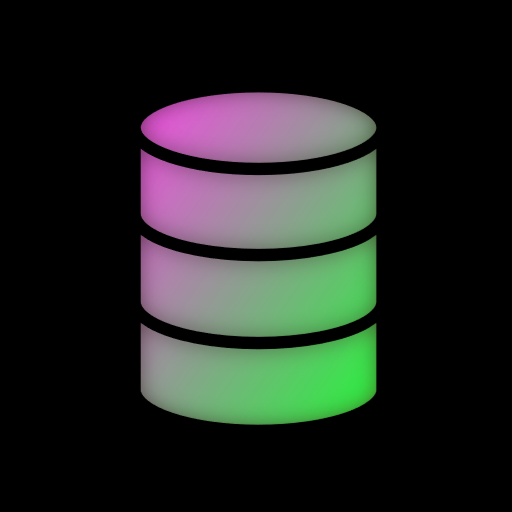

I’d probably use selenium. But that depends.


I’d probably use selenium. But that depends.


Bidet or washlet? I have a toto washlet that has a built in air dryer. Love the damn thing, but I still use a few squares of toilet paper to make sure it’s completely dry.


Oh gawd. That would be so horrible! Is there a project o compile JavaScript to bytecode? With like LLVM? There must be, but I haven’t heard of it. I shouldn’t even say anything because I will be better off pretending it doesn’t exist.


I totally get why you wouldn’t say Arch is fun. I’m not sure if I actually like arch or if I’m a masochist, however I will say, I learned a lot about the whole OS by installing it, and fixing it when it broke. It made me much more comfortable with using Linux. I haven’t used it in a couple of years, but I am thinking about reinstalling it. Nostalgia is a bad thing :-)


I like the ideas some other people mention. Specifically: read about your specific hardware and the distro of Linux you want to install. Then, make sure you are using as many open source cross platforms apps as you can, so when you do switch, you will be in familiar territory. I do think the criticisms of Ubuntu as a bad first choice are interesting, and maybe true, but I wouldn’t over look downstream distros like Pop!_OS. It’s Ubuntu, but with Flat packs and a distinctive Desktop Environment. Mint might also be a good choice, I know lots of people who like it (I don’t personally, but to each their own).
When I started on Linux, I installed Arch on an old MacBook. In those days apple was using amd64, but they were not friendly with Linux or the rest of the computing world. However it was older hardware, and the Arch Wiki had a great page on how to install Linux for that particular configuration. Arch is not a beginner friendly distro, but the wiki is fantastic, and so well documented.
But my main piece of distinctive advice is just do it. If you have read a few articles and have a pretty good sense of what is required (and are running common, last generation hardware), just jump in. You will probably never “feel” ready, and you will come across unique problems that no starter guide will prepare you for. So just go for it, and learn along the way.


Oh! I didn’t know about this! Thanks for posting it


Pine64’s laptops are ARM, but not not RISC-V. they do sell a RISC-V soc (the Star64), but the Rockpro64 chip is ARM.
I want an ARM laptop, but the PinebookPro was a little underpowered for me to use. Some day.


Python is powerful because it easily wraps C libraries that do real work! Just kidding mostly.
But yeah, js isn’t a language I would describe as powerful. Ubiquitous? More capable than you would expect given it’s history? Bloated?


I have had a paper map direct me through a gated community. Thankfully the tools in the truck unfastened the hinges. Still bugs me. It was a county road!


Same. Same. I know some people use their phones, or GPS devices, but when I’m backpacking, I want a paper map and a compass. I bought two a few months back for planning a trips this summer.


The lack of advertising is a big one, that’s for sure. And Dell isn’t spending any of their advertisement budget to brag about Linux.
Maybe that’s what canonical should spend it’s money on rather than snaps :-) (half joking…maybe )


On the one hand, I think you are right, people who know can find a Linux computer if they know where to look. And they should be easier to find. On the other hand, I don’t think many people by laptops at Best Buy any more. Maybe if BestBuy had one people would try it and see, but I feel like best buy is the place you go to buy a TV or a charging chord for your phone.


You can go to the Dell website today and filter by Operating System and select Ubuntu. Through Project Sputnik, Dell has been selling laptops with Ubuntu for over a decade. It’s a pretty interesting story, but I couldn’t find a summary of it online easily.


HP sold he DevOne, it had PopOS on it. Dell sells an XPS developer machine that has Ubuntu pre installed. System76, Entroware, and Tuxedo computers have all been selling Linux hardware for a long time. So there are viable commercial options. I wish the DevOne were going to get refreshed, it looks like a nice machine but alas, I don’t think it will.


This album, An Oath to the Void is fucking amazing! I really like it. This is awesome, and I’m still a sucker for those long intros. Bring 'em back I say! This is definitely going into the cart for the next bandcamp friday.
Any chance you will re-release any physical media? (and I am eagerly looking forward to any new music!)


I wanna hear about your metal project! Atmospheric, progressive black metal? Send links!


Linux Dev Time did a episode on this, it’s really good! https://www.linuxdevtime.com/linux-dev-time-episode-97/


I am not as familiar with RDBMs internals, but you could also build your server in the database. Right now, I am building a server client of sorts with Oxigraph. I have a store object that I am manipulating directly with rust code. It is an option. However its not going to be very flexible, and it does complicate the sanitization issues.
Also, prolog is a complete language, very capable of running the server. I don’t know what kind of architecture you are thinking of and having the distinction between datalog on the database and prolog in the server might be problematic. Also, I may be projecting a little. I wish I could be using prolog. But alas.


Everyone else has more experience than I, and I am not sure these are exactly the kinds of answers you are looking for…but the two things I have thought is using something like PL/SQL and stored procedures, so much of your backend logic is removed from the server and set into the database itself. Not exactly what you are looking for I think, and it has problems of its own.
Second, Prolog is a great query language (from what I am told) and capable of running a server. TerminusDB runs their server in prolog, and also postgres has a prolog implementation. It would be interesting to play with these things, but they may not exactly be what you are looking for.
Do you think chrome is too useful? Do you think Google is not creepy enough? Well I’ve got a new browser for you! Introducing OpenAI clippy browser! OpenAI can now legally steal all your data. With chat bots crammed in every corner. Help us boil the ocean!